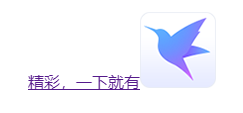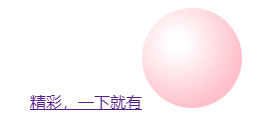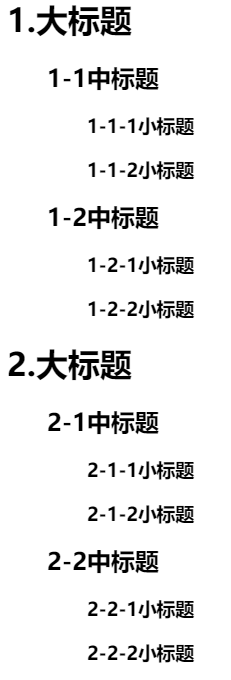Fe-interview: [css] 第19天 css的属性content有什么作用呢?有哪些场景可以用到?
第19天 css的属性content有什么作用呢?有哪些场景可以用到?
All 8 comments
- content属性与 ::before 及 ::after 伪元素配合使用生成文本内容
- 通过attr()将选择器对象的属性作为字符串进行显示,如:
a::after{content: attr(href)} <a href="http://www.baidu.com">a标签的href的值是:</a> 结果:a标签的href的值是:http://www.baidu.com
针对这道题写了篇blog,原文链接:https://xiangshuo.blog.csdn.net/article/details/89843456
以下是回答。
认识 :before 和 :after
- 默认
display: inline; - 必须设置
content属性,否则一切都是无用功,content属性也只能应用在:before和:after伪元素上; - 默认user-select: none,就是
:before和:after的内容无法被用户选中; - 伪元素可以和伪类结合使用形如:
.target:hover:after。 :before和:after是在CSS2中提出来的,所以兼容IE8;::before和::after是CSS3中的写法,为了将伪类和伪元素区分开;- CSS 中其他的伪元素有:
::before、::after、::first-letter、::first-line、::selection等; - 不可通过DOM使用,它只是纯粹的表象。在特殊情况下,从一个访问的角度来看,当前屏幕阅读不支持生成的内容。
content 定义用法
content 属性与 :before 及 :after 伪元素配合使用,在元素头或尾部来插入生成内容。
说明: 该属性用于定义元素之前或之后放置的生成内容。默认地,这往往是行内内容,不过该内容创建的盒子类型可以用属性 display 控制。
MDN 对 content 的取值描述:
content: normal /* Keywords that cannot be combined with other values */
content: none
content: 'prefix' /* <string> value, non-latin characters must be encoded e.g. \00A0 for */
content: url(http://www.example.com/test.html) /* <uri> value */
content: chapter_counter /* <counter> values */
content: attr(value string) /* attr() value linked to the HTML attribute value */
content: open-quote /* Language- and position-dependant keywords */
content: close-quote
content: no-open-quote
content: no-close-quote
content: open-quote chapter_counter /* Except for normal and none, several values can be used simultaneously */
content: inherit
content: <string> value 字符串
可以加入任何字符,包括 Unicode 编码等各种字符。
<a class="demo" href="https://www.xunlei.com/" title="精彩,一下就有">精彩,一下就有</a>
.demo:after{
content: "↗"
}

我们还可以通过 content 内字符串的变化,实现类似 加载中... 的动画效果
.demo:after{
animation: dot 1.6s linear both;
}
@keyframe dot{
0%{ content: "." }
33%{ content: ".." }
66%{ content: "..." }
100%{ content: "." }
}

类似的,还有种实现方式,steps阶梯函数实现元素位移
<a class="demo" href="https://www.xunlei.com/" title="精彩,一下就有">精彩,一下就有<dot>...</dot></a>
dot {
display: inline-block;
height: 1em;
line-height: 1;
text-align: left;
vertical-align: -.25em;
overflow: hidden;
}
dot::before {
display: block;
content: '...\A..\A.';
white-space: pre-wrap;
animation: dot2 1.6s infinite step-start both;
}
@keyframes dot2 {
33% {
transform: translateY(-2em);
}
66% {
transform: translateY(-1em);
}
}
content: <uri> value 外部资源
用于引用媒体文件,图片,图标,SVG等。
.demo:after{
content: url(https://img-vip-ssl.a.88cdn.com/img/xunleiadmin/5b9889e14dcdc.png);
}

受 background-image: url() 可以用渐变实现背景启发,类似的,一些函数是不是可以放在 content 中来实现?
.demo:after {
content: radial-gradient(circle at 35% 35%, white 10%, pink 70%);
display: inline-block;
border-radius: 50%;
width: 100px;
height: 100px;
overflow: hidden;
}

完美!当然本来就伪元素背景就可以实现,又为什么要放 content 呢?
content: attr() value 属性值的引用
调用当前元素的属性,可以方便的比如将图片的 Alt 提示文字或者链接的 Href 地址显示出来。
.demo:after{
content: attr(href);
}

.demo:after{
content: attr(class);
}

content: <counter> values
调用计数器,可以不使用列表元素实现序号功能。具体请参见 counter-increment 和 counter-reset 属性的用法。
<h1>大标题</h1>
<h2>中标题</h2>
<h3>小标题</h3>
<h3>小标题</h3>
<h2>中标题</h2>
<h3>小标题</h3>
<h3>小标题</h3>
<h1>大标题</h1>
<h2>中标题</h2>
<h3>小标题</h3>
<h3>小标题</h3>
<h2>中标题</h2>
<h3>小标题</h3>
<h3>小标题</h3>
h1::before{
content:counter(h1)'.';
}
h1{
counter-increment:h1;
counter-reset:h2;
}
h2::before{
content:counter(h1) '-' counter(h2);
}
h2{
counter-increment:h2;
counter-reset:h3;
margin-left:40px;
}
h3::before{
content:counter(h1) '-' counter(h2) '-' counter(h3);
}
h3{
counter-increment:h3;
margin-left:80px;
}

引用符号
属于引用符号的取值有 4 种,共 2 对,在 CSS 中用了语义较为清晰的关键词来表示: open-quote、 close-quote、no-open-quote、no-close-quote。
默认:
.demo::before {
content: open-quote;
}
.demo::after {
content: close-quote;
}

自定义引用符号:
.demo {
quotes: "『" "』";
}
.demo::before {
content: open-quote;
}
.demo::after {
content: close-quote;
}

quotes 可以设置多组引用符号,用以应对次级引用:
.demo {
quotes: "«" "»" "‹" "›";
}
.demo::before {
content: no-open-quote open-quote;
}
.demo::after {
content: close-quote;
}

总结
以上我们主要了解了 content 的一些用法和巧用,当然 :before 和 :after 本身作为元素,也可以实现多种应用效果,比如:三角形(border)、装饰元素、阴影等。希望通过以上介绍,能让大家对 content 有更深入的了解,帮助我们在平时的布局和样式以及用户体验中发挥更大的价值。
END.
Demo codepen 地址:https://codepen.io/xiangshuo1992/pen/zQGyBW
content属性一般是给::before, ::after这两个伪类提供内容。
可以给伪元素设置内容,一般用于字体图标,防止图标文字和内容文字冲突,又可以将文字都写在css中方便管理
CSS 的 content 一般用在 ::before/after 这类的伪元素中。并且如果 ::before 和 ::after 元素如果不设置 content 属性的话,也是没有效果的。
| 序号 | 属性 | 用法 |
| ---- | ----------------------------- | ------------------------------------------------------------------------------------------------------------------- |
| 1 | '字符串' | content: 'xxx' 单纯显示内容。一般在文字的前后添加内容或者图标。 |
| 2 | attr() | content: attr(attributes) 动态显示对应标签的属性 |
| 3 | url() | content: url(url) 插入图片 |
| 4 | counter() | content: counter(name) counter 的 name 可以自己定义。需要配合 counter-increment 和 counter-reset 一起使用。 |
| 5 | open-quote 和 close-quote | content: open-quote; 实现自定义的引号,一般用来匹配多语言的情况。 |
作用:给元素加内容
应用场景:
- 在清除浮动时::after伪元素必须要添加content属性
- content可以获取元素的属性值
- 可以引入外部资源
序号 | 属性 | 用法
-- | -- | --
1 | '字符串' | content: 'xxx' 单纯显示内容。一般在文字的前后添加内容或者图标。
2 | attr() | content: attr(attributes) 动态显示对应标签的属性
3 | url() | content: url(url) 插入图片
4 | counter() | content: counter(name) counter 的 name 可以自己定义。需要配合 counter-increment和 counter-reset 一起使用。
5 | open-quote 和 close-quote | content: open-quote; 实现自定义的引号,一般用来匹配多语言的情况。
Most helpful comment
针对这道题写了篇blog,原文链接:https://xiangshuo.blog.csdn.net/article/details/89843456
以下是回答。
认识
:before和:afterdisplay: inline;content属性,否则一切都是无用功,content属性也只能应用在:before和:after伪元素上;:before和:after的内容无法被用户选中;.target:hover:after。:before和:after是在CSS2中提出来的,所以兼容IE8;::before和::after是CSS3中的写法,为了将伪类和伪元素区分开;::before、::after、::first-letter、::first-line、::selection等;content定义用法content属性与:before及:after伪元素配合使用,在元素头或尾部来插入生成内容。说明: 该属性用于定义元素之前或之后放置的生成内容。默认地,这往往是行内内容,不过该内容创建的盒子类型可以用属性 display 控制。
MDN 对
content的取值描述:content:
<string>value 字符串可以加入任何字符,包括 Unicode 编码等各种字符。
我们还可以通过
content内字符串的变化,实现类似 加载中... 的动画效果类似的,还有种实现方式,steps阶梯函数实现元素位移
content:
<uri>value 外部资源用于引用媒体文件,图片,图标,SVG等。
受
background-image: url()可以用渐变实现背景启发,类似的,一些函数是不是可以放在content中来实现?完美!当然本来就伪元素背景就可以实现,又为什么要放
content呢?content: attr() value 属性值的引用
调用当前元素的属性,可以方便的比如将图片的 Alt 提示文字或者链接的 Href 地址显示出来。
content:
<counter>values调用计数器,可以不使用列表元素实现序号功能。具体请参见
counter-increment和counter-reset属性的用法。引用符号
属于引用符号的取值有 4 种,共 2 对,在 CSS 中用了语义较为清晰的关键词来表示: open-quote、 close-quote、no-open-quote、no-close-quote。
默认:
自定义引用符号:
quotes可以设置多组引用符号,用以应对次级引用:总结
以上我们主要了解了
content的一些用法和巧用,当然:before和:after本身作为元素,也可以实现多种应用效果,比如:三角形(border)、装饰元素、阴影等。希望通过以上介绍,能让大家对content有更深入的了解,帮助我们在平时的布局和样式以及用户体验中发挥更大的价值。END.